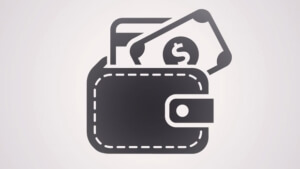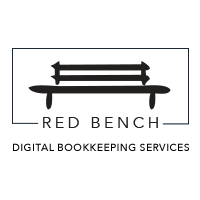
The Red Bench can help modernize your bookkeeping functions.
From pen and paper to digital convenience we can make it happen!

How to Reimburse Out of Pocket Expenses
Business owners commonly reimburse their business expenses from personal funds. While it is best practice to keep business transactions and personal transactions separate, we know that it’s commonplace to mix the two. Whether it’s cash spending from your wallet, using personal credit cards for business, or office expenses on the same receipt as domestic expenses, these items must be entered into accounting systems for the appropriate tax deductions to apply. Here’s how to deal with tax-deductions when business and personal mix.

Using Xero, account ledgers can be set up with a series of “Shareholder” accounts to keep accounts clean. Use this setup for the following:
- Drawings – for all funds withdrawn from the business or personal expenses paid through the business account
- Funds Introduced – for all loans into the business or payments made by the owner on behalf of the business, including Home Office Expenses and Motor Vehicle charges
- Shareholder Salary Allocated – for the end-of-year allocation of shareholder salary for companies
- Interest & Personal Use Charges – for any chargebacks against the owner such as interest on overdrawn current accounts, personal use charges etc.
It is possible to run all these through a single account (Shareholders’ Current Account) as well. We recommend that the Funds Introduced (or other single account) be marked as “Enable Payments” in the Chart of Accounts – this will become useful in a moment. There are several ways that you can record the out of pocket expenses and related reimbursements:
Expense Claims
The Expense Claims can be an effective vehicle for recording any expense made by the owner. The process would be to enter the expenses and approve them. If the business is going to reimburse you for them then you go through the standard payment process. If the business is not going to reimburse you directly but treat it as a loan or wash it up in the shareholder current account, then you should create a “fake” payment to the Funds Introduced (or Shareholder Current Account) – you will need the account to have payments enabled for this to work. You should do this periodically to ensure that the expenses get captured in the HST return on a timely basis.
Direct Reimbursement
If you don’t use the Expense Claim module but do reimburse the expenses directly then you may choose to simply code the payment when you write the cheque or transfer funds back to the owner. You would normally use a spend money transaction with “Add Details” to record and code the components. I do not recommend using this method unless you are reimbursing on a timely basis and in full. If you are “reimbursing” (say) $2000 but the expenses documented are for $1857 then you should use one of the following methods, or code the difference as drawings.
Entering Bills
Under this method you would enter a supplier Bill for all expenses that you need to record, and approve them. If you are reimbursing for exact amounts then you can create a payment batch or reconcile the payment to the owner against the various bills. If you are not reimbursing directly then you should either use a payment batch or on each bill complete the “Make a payment” area and the “Funds Introduced” account as the payment account (you need payments enabled on this account first). When you finally make a payment to yourself it would be treated as drawings.
Manual Journal
You should only use this method if none of the above methods are viable for you. We strongly recommend that you check with your accountant before entering manual journals. In this method you would create a manual journal to record the transaction. You would enter each expenses as a debit (ensuring that the HST is properly recorded) and code the total to the Funds Introduced as a credit. This should balance the journal.
When you finally make a payment to yourself it would be treated as drawings.
Still having trouble?
If you are still having trouble getting things working, never fear. Get set up with your own Connected Advisor on The Red Bench team today.
THINGS WE DO THAT CAN CHANGE YOUR LIFE
Our accounting software with all the time-saving tools you need to grow your business.
Red Bench is always reliable and our experts are here to support you 24/7.







